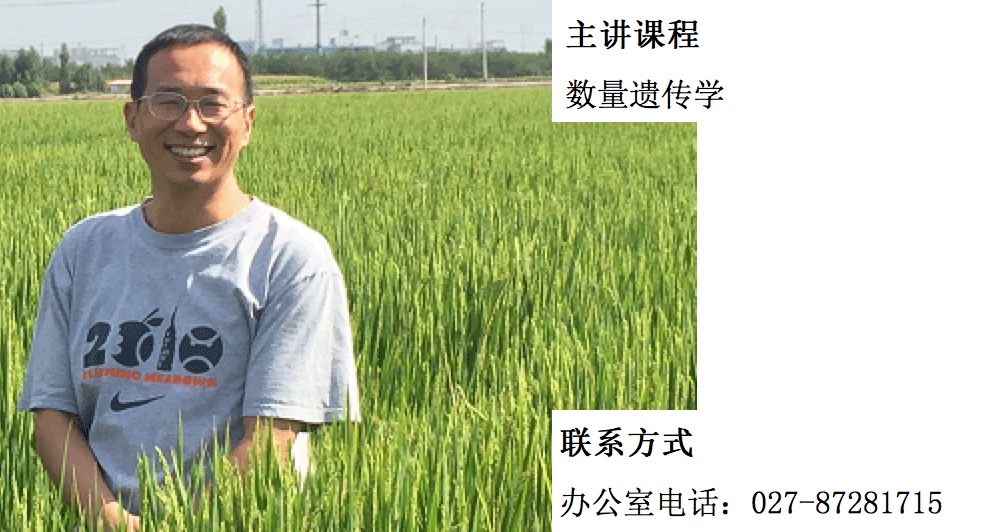博文
PLOS Genetics:GWAS揭示水稻bHLH亚家族16成员调控剑叶角度
||
Genome-wide association studies reveal that members of bHLH subfamily 16 share a conserved function in regulating flag leaf angle in rice (Oryza sativa)
First author: Haijiao Dong; Affiliations: Huazhong Agricultural University (华中农业大学): Wuhan, China
Corresponding author: Yongzhong Xing (邢永忠)
As a major component of ideal plant architecture, leaf angle especially flag leaf angle (FLA; 剑叶角度) makes a large contribution to grain yield in rice. We utilized a worldwide germplasm collection to elucidate the genetic basis of FLA that would be helpful for molecular design breeding in rice. Genome-wide association studies (GWAS) identified a total of 40 and 32 QTLs for FLA in Wuhan and Hainan, respectively. Eight QTLs were commonly detected in both conditions. Of these, 2 and 3 QTLs were identified in the indica and japonica subpopulations, respectively. In addition, the candidates of 5 FLA QTLs were verified by haplotype-level association analysis. These results indicate diverse genetic bases for FLA between the indica and japonica subpopulations. Three candidates, OsbHLH153, OsbHLH173 and OsbHLH174, quickly responded to BR and IAA involved in plant architecture except for OsbHLH173, whose expression level was too low to be detected; their overexpression in plants increased rice leaf angle. Together with previous studies, it was concluded that all 6 members in bHLH subfamily 16 had the conserved function in regulating FLA in rice. A comparison with our previous GWAS for tiller angle (TA; 分蘖角度) showed only one QTL had pleiotropic (多效性的) effects on FLA and TA, which explained low similarity of the genetic basis between FLA and TA. An ideal plant architecture is expected to be efficiently developed by combining favorable alleles for FLA from indica with favorable alleles for TA from japonica by inter-subspecies hybridization.
作为理想型植物株型的一个重要部分,叶片角度,尤其是剑叶角度FLA对于水稻的籽粒产量贡献巨大。本文利用全球范围的种质资源对FLA的遗传基础进行了阐释,希望有助于水稻的分子设计育种。对武汉和海南的两个群体的全基因组关联分析分别鉴定了40和32个FLA相关的数量性状位点QTL。其中,有8个QTL位点在这两次试验中是重合的。而在这些重合的QTL位点中,2个是籼稻亚群体中特有的,3个是粳稻亚群体中特有的。另外,通过单倍型水平的关联分析进一步验证了其中5个QTL位点。这些结果显示在籼稻和粳稻这两个亚群体中控制FLA的遗传基础是不一致的。其中,3个候选基因OsbHLH153,OsbHLH173和OsbHLH174能够快速响应BR和IAA,参与植物株型的调控,而OsbHLH173基因的表达量太低,以致无法检测。这些基因的过表达均能够增加水稻植株的叶片角度。这些结果与先前的报道一致,表明bHLH亚家族16中的6个基因成员具有调控水稻FLA的保守功能。通过与团队先前关于分蘖角度TA的全基因组关联分析比较,作者表明仅仅只有一个基因同时对于FLA和TA具有调控作用,这解释了FLA和TA遗传基础的高度不一致性。作者认为可以通过将具有FLA优势等位基因的籼稻和具有TA优势等位基因的粳稻进行杂交以获取具有理想株型结构的水稻植株。
通讯:邢永忠(http://lst.hzau.edu.cn/sz/jsyg/ycjxbswx/js4/201511/t20151105_61808.htm)
个人简介:1988-1992年,湖北农学院(现长江大学),农学学士;1993-1996年,湖南农业大学,农学硕士;1996-1999年,华中农业大学生科院,生物化学与分子生物学博士;1999-2001年,华中农业大学生科院,讲师;2002-2006年,华中农业大学生科院,副教授;2002年-至今,作物遗传改良国家重点实验室,水稻产量生物学课题组负责人;2003-2006年,丹麦农业科学院(现Aarhus大学),遗传生物技术系博士后;2006年-至今,华中农业大学生命科学技术学院,教授。
研究方向:1. 水稻产量性状遗传基础研究;2. 产量性状(粒形、穗粒数和株型)基因克隆及分子机制;3. 水稻开花基因克隆及其分子机理探讨。
doi: https://doi.org/10.1371/journal.pgen.1007323
Journal: PLOS Genetics
Published date: 04 April, 2018
(P.S. 欢迎关注微信公众号:微信号Plant_Frontiers)
https://blog.sciencenet.cn/blog-3158122-1108658.html
上一篇:Nature Plants:SPL6通过抑制ER胁迫信号输出控制水稻穗细胞死亡
下一篇:Nature Communications:水稻OsAUX1基因低磷条件下促进根毛伸长
全部作者的其他最新博文
- • Plant Physiology:CsMADS3促进柑果中的叶绿素降解和类胡萝卜素合成(华中农业大学)
- • Molecular Plant:LBD11-ROS反馈调节作用于拟南芥的维管形成层增殖和次生生长(浦项科技大学)
- • Science Advances:根结线虫通过调控植物的CLE3-CLV1模块,促进侵染进程(日本熊本大学)
- • Nature Communications:油菜素内酯参与植物营养生长期转变的分子机制解析(浙江农林大学)
- • Current Biology:光合作用产生的蔗糖驱动侧根“生物钟”(德国弗莱堡大学)
- • PNAS:花同源异型基因在叶中被抑制、花中被激活的分子机制(南卡罗来纳大学)

